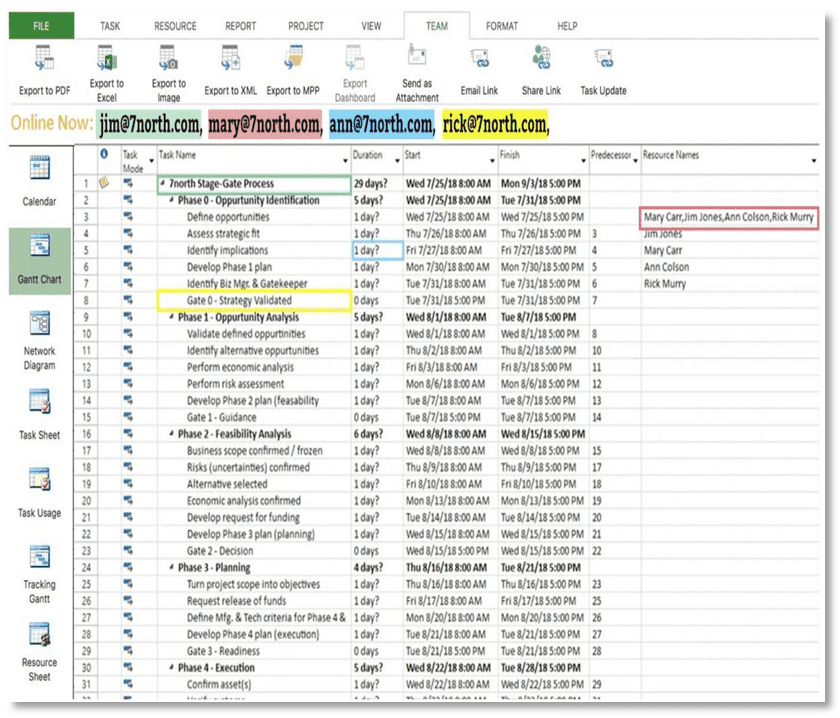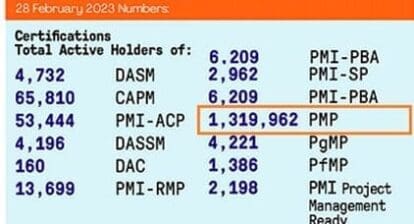 You can tell an aging project manager by the metaphors they use to explain things, and such is the case today, as I’ll be using the rather antique notion of a three-ring circus (once the greatest show on earth), to explain the newer concept within Project Management of “real-time” collaboration. I also plan to tell you a little about a new service that implements this interesting new act. I hope that through this article I can help MS Project users work better together as they develop and implement schedules.
You can tell an aging project manager by the metaphors they use to explain things, and such is the case today, as I’ll be using the rather antique notion of a three-ring circus (once the greatest show on earth), to explain the newer concept within Project Management of “real-time” collaboration. I also plan to tell you a little about a new service that implements this interesting new act. I hope that through this article I can help MS Project users work better together as they develop and implement schedules.
The Collaboration Circus
If you’re a baby-boomer PM, you probably have fond memories of summer seats at the circus or of being under another similar big-top tent. The trapeze artists, the performing animals and tamers, the ringmaster barking orders, and the clowns tumbling ….oh those now scary clowns… the snow cone and corn dog stands, the sound of wild beasts bellowing, and the smell of trampled hay and manure. Does that description evoke good memories of simpler times…? It does for me.
Any project manager attending the circus today would be sure to notice the tight collaboration between disparate performing teams, the communication between tamer and tiger, and the control of the ringleader who coordinates activities in three rings at once. From a project management perspective, it’s fantastic!
During my career managing projects, I’ve often felt like the ringmaster of a three-ring circus. Haven’t you? Yet looking back, I feel the higher-on-the-wire that my career careened, the less and less I felt in touch with all the action taking place below. I’m not alone.
In a recent Forbes Insight report, only 14% of executives were found to be completely satisfied with their ability to collaborate, even though workers on the outer rings of the C-level all felt nearly 100% satisfied with their ability to collaborate with peers and management.
The disparity cannot easily be explained, even though this Forbes Insight report tries to do that in just a few pages. My takeaway was to begin looking at the “collaboration opportunity” in order to better see what we might be overlooking. The Forbes report helps us to do this by laying out a very interesting collaboration topology.
Understanding Big Tent Topology
One view of collaboration (as a three-part opportunity to grow) can be sliced into:
1. People opportunities
2. Workload opportunities
3. Tools opportunities
All three of these parts contain attributes that may or may not contribute to true collaboration taking place during project
work. For example, almost all modern companies today focus on ways to improve collaboration between people: better information and knowledge sharing, more customer relationship managing, and in some cases, better resource management and timekeeping. This improvement cycle invariably leads to a tools improvement cycle, with a focus on helping people collaborate better with each other. Improvement is typically sought in areas of the three C’s: Communication, Content and Coordination. But, is it really working? Does the ability for our workforce to chat about, “like,” or provide emoji’s as feedback to each other’s work really improve the bottom line?
Herein lies the rub for us project managers who need to wear Kevlar pocket protectors. As PMs, we are most often focused on the workload – clowns be damned! We aim to reduce the distractions and the sideshows, so we can get some work done! If we further examine this chaotic beast, we can say that as Microsoft Project managers, we have the workload at the tips of our fingers – so why not try something new, and improve that, instead of continually trying to improve people (an exhausting work-in-progress)?
Focusing on the Center Ring – Your Workload!
The lucky few who have access to a project’s .MPP file (ya know, those file-ly looking things spit out by all versions of MS Project) have a hidden advantage over others without access to the .MPP. Why? Well, with the .MPP file, we have access to resource info, task info, dates and timings, projections and critical paths, reports, and more – all of it! The .MPP is essentially the data representation of any workload, either in progress or being dreamed up.
So, what can we do with that, in a collaborative sense? Connect this wealth of data with all the people who need to know it, right? Work on the creation, addition, subtraction, and changes to that dataset with all involved, yes? Isn’t this an idea for better collaboration? That sounds impossible even as I type it.
The most fortunate-of-the-fortunate have SharePoint with Project Server installed, along with OneDrive for Business and everyone connected via Skype for Business. That type of set up covers most collaborative needs and hopefully accomplishes the important goal of connecting people with live data. All people involved have a joint, collaborative manipulation of this data, in real time. However, many of us that work in .MPP may not be so lucky to have Microsoft’s hundred-thousand dollar+ system on hand. What can those of us without the above described scenario do?
As a somewhat standalone MS Project Professional user, I recently tried out a new Software-as-a-Service called Project Plan 365: Business (PMO). Using this subscription plan, I could share current and future .MPP files with the rest of my team. In essence, an ad hoc Project Management Office (PMO) was created online using this service. I could collaborate with others whilst building a plan, and even while executing a work plan with other worker bees, each who updated their own progress using iPads, phones, Macs – whatever they had on hand. From that portfolio of projects created, the service tracked key attributes (portfolio calculations) that could be shared with C-level members of the team, either by them logging in directly, or by another team member creating a report. In addition, the service tracked all activity in an activity log, so I could always go back and see who had done what.
Real-time Collaboration, or as Microsoft calls it, Co-Authoring
In 2018, Microsoft updated its Office 365 suite of products to bring collaboration to the workload segment of the circus, namely by allowing multiple editors of some Office documents to collaborate together in real time. Co-authoring, co-editing, real-time collaboration – call it what you will – has long been a dream of many teams jointly responsible for documents or other chunks of knowledge or data.
You can try it for yourself in the latest (2019) versions of Excel, Word, or Powerpoint, but if you are looking for that same feature in any version or flavor of Microsoft Project, it’s just not there – nor are there any published plans for that capability to ever come out of Redmond.
Real-time collaboration in Project Plan 365: Business (PMO), with Jim, Mary, Ann and Rick all working on different parts of the .MPP at the same time; denoted by color. Each collaborator is using a different platform and device, i.e. Mac vs. PC, Android vs. iPhone, browser vs. desktop.
This is why I suggest that one way to try out this new concept is to have two or more adventurous planners try out the Project Plan 365 service (the first 30 days are gratis). Then, collaboratively begin working on a project plan together. You can bring others onboard as needed. That path forward is explained here, with whiteboards provided by the developer, Housatonic Inc. Here is a screen shot showing the collaboration in action, which looks very similar to co-authoring in newer versions of Excel.
From these software-tool developments, it appears software designers foresee the benefit of this feature for their users. In our case, those users being project managers, team players, and any other stakeholder, regardless of where they are or what device they are using to contribute to the work plan or schedule. The purpose of this type of collaborative tool is to connect as many people as needed to the workload (our .MPP file). This puts work center-stage as collaboration happens, and that’s something I’m comfortable doing any day of my PM week. What I like most about this scheme is there is no intrusive locking or unlocking of files, complicated check-in/check-out processes, or annoying “Like” and emoji buttons. Project Plan 365 looks just like any other MS Project screen, so there is no new interface for anyone to stumble through!
Summing Up
While looking at the “people” or “tools” part of a collaboration circus, it’s possible to overlook what can be done in the other ring – the “workload” stage of the show.
That said, we can start collaborating better by constructing our workload data (plans, schedules, forecasts, etc.) directly, with as many of the needed resources present (and inside our project .MPP file with us). Each would contribute data directly, and in full view of everyone else; however, we don’t have that feature today in most versions of MS Project, so for now, we have to look elsewhere…
I suggest you try out the just tested is Project Plan 365: Business (PMO), a nifty service which does the job of directly connecting PMs, workers, stakeholders, etc. with any .MPP project file. As I described above, you and your team can construct a schedule from scratch in real-time, without paying attention to the varied platforms or devices being used by your mix of collaborators. (Project Plan 365 has software apps for every platform, whereas MS Project just has two: Windows and the Web.) So, as a Microsoft Project user, you can either wait for MS to implement rTc (or as Microsoft would call it, co-authoring), or you can try Project Plan 365 out today by signing up for a 30-day free trial on the Project Plan 365 website.
Whether you’re one of the circus performers or the circus ringmaster, here’s to finding a better seat at the circus, where you can see all rings of your project circus, and where everyone is coordinated and collaborating!












